Eastern Hophornbeam
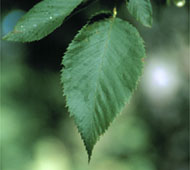
Leaf Characteristics
- broad, flat leaves
- simple leaves
- not lobed
- fine, double teeth
- base symmetrical
- base not wedge-shaped
- leaf longer, oval
- narrows toward tip
- 3x as long as wide
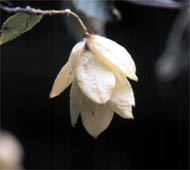
Fruit Characteristics
- winged
- single winged
- elongated
- nut in papery, bladder-like sac
A champion specimen of this tree in Trumbull County had grown to the height of 65 feet by 1988. Bark of the trunk of this tree is light brown in color. It is fractured into narrow scales, which are loose at their ends. This gives the trunk a shredded look. The combination of trunk and bark should separate this tree from the American Hornbeam, with which it has shared an unusual history of confusion in common names. Each tree has at some time been called by the common name of the other. The Eastern Hophornbeam grows well in a variety of soils --- wet, dry, in between --- and often is found beneath other, taller trees in hardwood forests. It grows throughout the eastern United States and into some of the states west of the Mississippi River. It grows in southeastern Canada as well. It is found throughout the state of Ohio. The wood of this tree is strong and hard. Since it is durable the wood has been used for fence posts. It also is used for making tool handles, mallets and other small articles. Rabbits and deer sometimes feed on the bark and twigs. Nutlets and buds are eaten by birds such as grouse, pheasants and quail, and by rabbits.
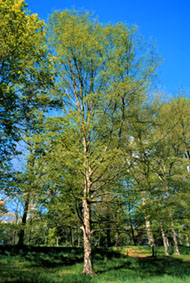 Tree Size
height 20' - 30'
diameter 1' - 2'
Tree Size
height 20' - 30'
diameter 1' - 2'
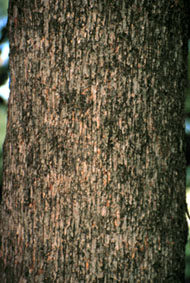 Bark
Bark
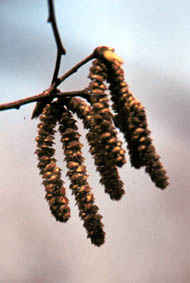 Flower
Flower 